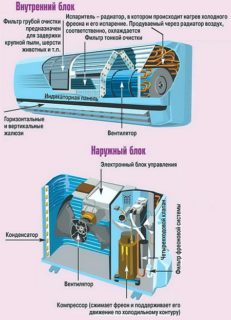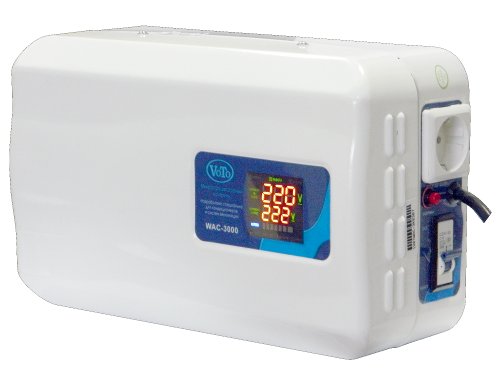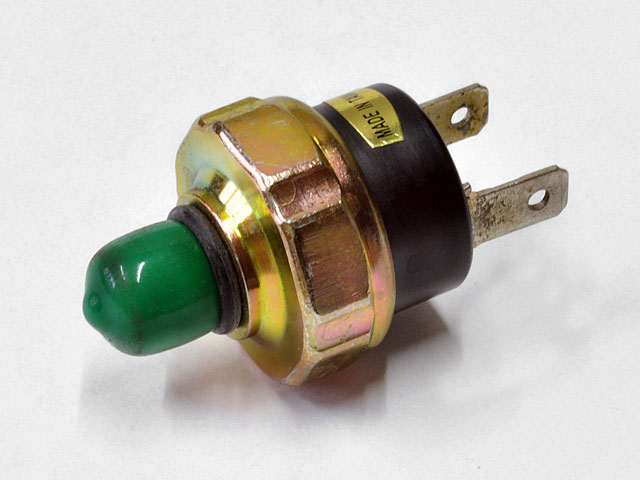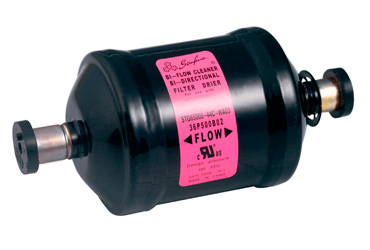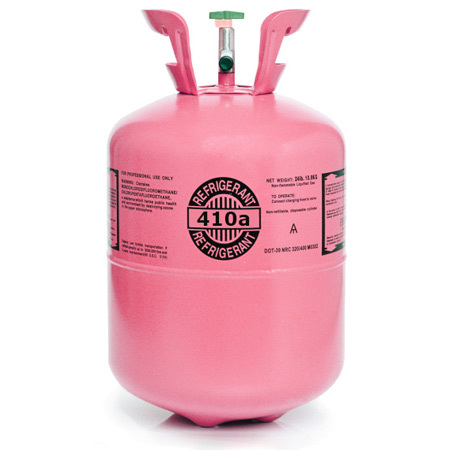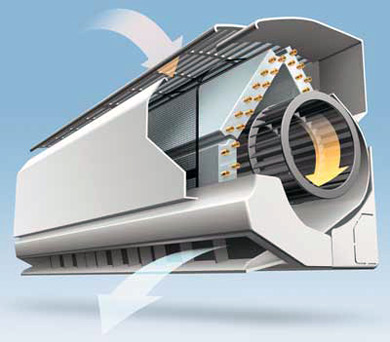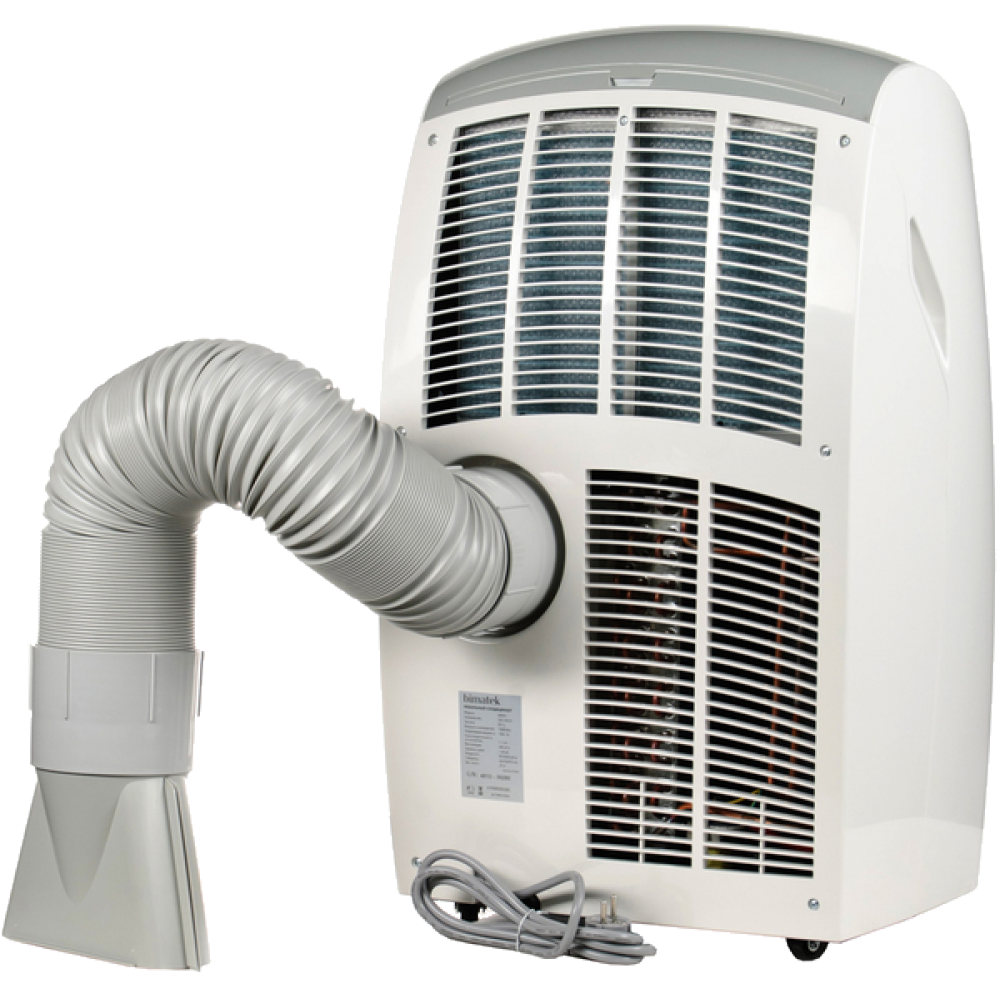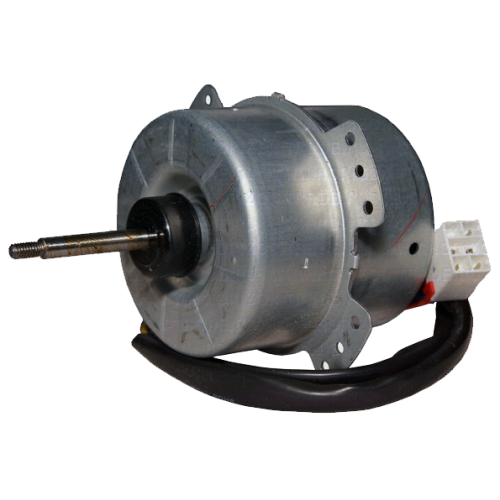Household and semi-industrial air conditioners are of two types, depending on the design and principle of operation: monoblock and split systems. Monoblocks, in turn, are divided into mobile, window and evaporative devices, and split systems - into wall, cassette, duct, column and floor-ceiling (universal).
- The basis of the principles of operation of different climatic systems
- How split systems work and their varieties
- Cooling work
- Heating work
- Precision air conditioners
- Inverter air conditioners
- Duct climate system
- How mobile air conditioners work
- Cooling
- Heating
- Cooling and heating with window air conditioners
- Cooling
- Heating
- How Evaporative Air Conditioners Work
- Cooling
- Heating
The basis of the principles of operation of different climatic systems
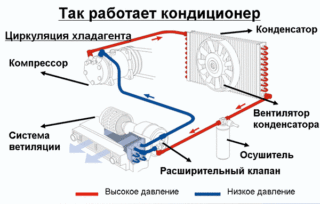
The phase transition temperature, when the gas becomes liquid and then returns to its normal state, depends on the operating pressure - the higher it is, the higher the phase transition temperature.
In order for liquid freon to boil and take heat from the air, the compressor creates pressure in the evaporator, at which the phase transition temperature is lower than the ambient temperature. When the compressor creates a pressure at which the phase transition temperature is higher than the air, freon again takes on a gaseous state and gives off the taken heat to the outside, that is, to the street, through the external unit.
If we consider the principle of operation of a floor air conditioner without an air duct, then the same property of a liquid is used here, but the working substance is water, not freon. There is no closed loop inside the instrument. The liquid is pumped up by the drain pump and evaporates under the influence of warm air, giving off the coolness to the outside. In fact, it is more of an evaporator, not an air conditioner, since it humidifies the air well, but cools mediocre.
How split systems work and their varieties
Freon circulates in a closed circuit. It consists of:
- internal coil - evaporative heat exchanger;
- external coil - condenser heat exchanger;
- connecting copper pipes - freon line;
- a compressor that increases the pressure;
- capillary tube in household systems;
- thermostatic valve (TRV) for semi-industrial units.
Capillary tube and expansion valve have a common synonym - throttling device. They provide a pressure difference between condensing and evaporating refrigerant due to the hydraulic resistance along the entire length.
Air conditioners that can heat the air have a 4-way valve that changes functionally two heat exchangers in places - the outer one is responsible for the evaporation of the refrigerant, and the inner one is responsible for its condensation.
Cooling work
Freon enters the compressor, where its pressure increases 3 times, and the temperature rises by 50-60 ° C, that is, compression occurs.Then it goes into the condenser and is blown with colder air, after which it turns into a liquid state. The air passes through the condenser heat exchanger and is heated by the heat generated by the freon.
The refrigerant then flows into a spiral capillary tube or expansion valve, where its pressure decreases, the temperature decreases and little evaporation occurs. The evaporative heat exchanger is purged with room air, but when colder freon is supplied, it cools down. At the same time, the refrigerant takes its heat and goes into its original state. Then the cycle is repeated.
When working in the cold, the split-system air conditioner action scheme consists of 4 main stages: compression, condensation, rarefaction and evaporation.
Heating work
The essence of the principle of operation of the split-system air conditioner for heating does not change. When the 4-way valve switches the functions of the units, when the direction of the refrigerant flow changes, air is taken from the street by the outdoor unit, where the freon evaporates, and it is delivered to the room by the indoor unit, in which the refrigerant again enters the gaseous phase.
The lower the air temperature outside, the more difficult it is to extract heat from it, since the difference between the air temperature and the evaporation temperature of freon decreases, therefore, the heating capacity decreases due to the equalization of their values.
Precision air conditioners
- It is capable of operating 24/7/365 for 10 years, while a household split-system will last no more than 2 years.
- It has a powerful fan, due to which the cooling quality is higher than that of a split. Air currents of a given temperature are evenly distributed throughout the room.
- Freon, water or glycol can act as a working substance.
- Air humidification is carried out using an electrode-type steam generator.
Precision air conditioners are used in server rooms where it is necessary to continuously maintain a certain temperature and humidity.
Inverter air conditioners
The principle of operation of an inverter air conditioner is the same as that of a conventional air conditioner. The difference between inverter-type climatic equipment is in operating mode control. In a conventional split system, when the set temperature is reached, the compressor is turned off. When the temperature changes upwards, the blower starts up. Thus, the system operates at full capacity, but intermittently.
Inverter motors have a frequency converter board that changes the standard frequency of the electrical network. The fan does not stop working when the temperature norm is reached: it gradually slows down the rotation, and when the air heats up by 1 degree, it increases the number of revolutions per unit of time.
The advantages of such a control are in the durability of the equipment and in saving electricity up to 30% compared to non-inverter split systems.
Duct climate system
A system of inlet and outlet air ducts departs from the indoor unit of the duct air conditioner, through which warm air is taken in and cold air is supplied to one or several rooms.
Equipment of this type has the function of mixing fresh air from the street up to 30%.
Installation of a duct-type air conditioner is best done at the stage of building construction - the unit is installed under the ceiling along with the ventilation system.
How mobile air conditioners work
Cooling
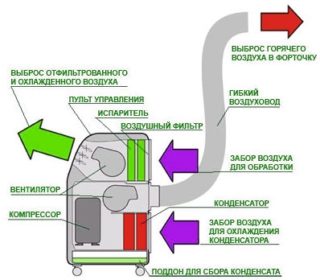
With the first flow, the condenser is cooled by the already cooled air passing through. The warm flow is removed to the outside through a corrugated discharge hose. A second stream of air is needed to cool the room. Passing through the evaporator, warm air gives off heat to freon and lowers its temperature, after which it returns to the room through the distribution grilles on the body.At the same time, the compressor creates the required pressure, and the centrifugal fan provides air intake and blowing off the heat exchangers. This is how the principle of operation of mobile air conditioners for cooling is built.
If we talk about the principle of operation of a mobile air conditioner with an air duct, the difference is that there are two sealed compartments in the case with two different coils. In the lower one there is a condensing heat exchanger, and in the upper one there is an evaporative one.
Heating
When heated, the monoblock usually operates in fan heater mode, and the air duct is closed from the outside with a plug so that cold air from the street does not enter the device. The air conditioner isolated from the external environment can function in any frost.
The principle of operation of the air conditioner for heating in this case is not based on redirecting the refrigerant in the other direction, but on electric heating due to ceramic heating elements, which turn a mobile device into a typical heater.
Cooling and heating with window air conditioners
The functioning of the window unit practically does not differ from the principle of operation of the floor air conditioner. It also has two compartments: in one there is an evaporative heat exchanger, and in the outside - a condensing one.
Cooling
When cooled, freon circulates between the two coils. A centrifugal fan draws air from the room, passing it through a coarse filter, and blows it around the evaporative heat exchanger. Due to the difference in temperature and injected pressure, the air gives off heat to the freon and cools, heading back into the room. The coolant at this time moves to the heat exchanger on the outside of the window unit, where heat is transferred to the air blown by the axial fan through the side grilles.
Heating
If we talk about the principle of operation of a window-type air conditioner for heating, then built-in heating elements are also used here, which make it possible to turn the cooling device into a full-fledged heater. Up to -15 ° C, such a monoblock will warm the air in the room properly.
How Evaporative Air Conditioners Work
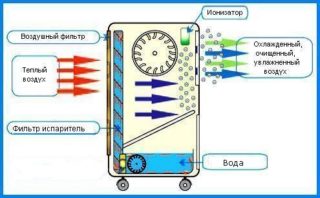
Evaporative air conditioners do not have freon circuits with heat exchangers and compressors. The airless floor unit contains the following elements:
- fan;
- drainage pump;
- porous hydro-filter;
- coarse air filter;
- container for cold water.
The working fluid is cold water, in which ice is additionally placed for more efficient cooling.
Cooling
There is no need to remove moisture, since it is released into the room along with the cooled air, therefore such monoblock devices are also called humidifiers or evaporative air conditioners.
The cooling cycle consists of several stages:
- the hydro-filter is impregnated with water coming from a special container under the influence of a drainage pump;
- the air flow passes through a mechanical filter and enters the hydro-filter;
- here it gives up its heat to the water, and it begins to evaporate, while cooling and humidifying the air flow occurs.
The operation of an air conditioner without an air duct is that water changes from a liquid to a gaseous state and absorbs heat from the air.
Heating
If we consider the principle of operation of an air conditioner-evaporator for heating, then it is no different from window units and mobile ones with an air duct. A heating element is built into the casing of the floor-mounted evaporating unit, which allows the device to be operated in the mode of an electrically heated fan heater. There are no restrictions on the outside temperature.
The principles of operation of all air conditioners: floor, window and split systems are based on the property of a liquid to take and give off heat during evaporation and condensation, but the cooling or heating cycle can vary greatly due to the design features of the device.

